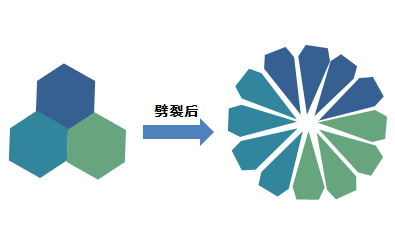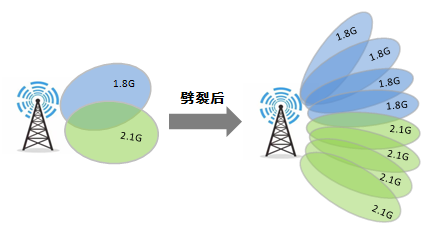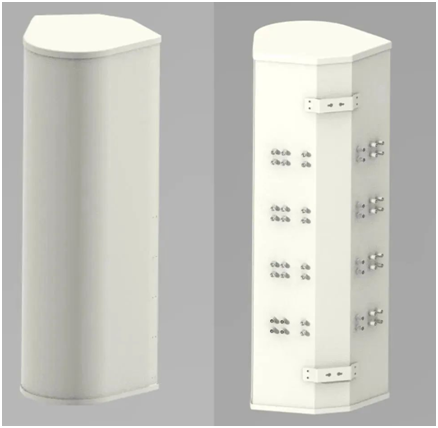PLAINVIM CORPORATE VIDEO
企业宣传片
2022/04/09 ![]() 0
0
With the development of the communication industry, the penetration rate of 5G users continues to increase. At present, in high-capacity hotspot scenarios such as universities and large-scale event venues, the user's business volume increases significantly during a specific time period, resulting in a significant decrease in signal perception, and the network capacity cannot meet the user's usage needs, which seriously affects the service experience. However, operators are faced with the problems of limited site resources available for network expansion, difficulty in adding new poles, and high cost of site construction. They urgently need a low-cost, easy-to-implement, and fast-deployment solution that can meet network coverage and capacity requirements, and improve network quality and users. perception.
In response to the above problems, Foshan EAHiSON Communication Co., Ltd. Zhichuang's multi-frequency multi-beam independent ESC Luneburg lens antenna came into being, which can not only solve the requirements of network coverage and capacity, but also meet the requirements of operators to save site resources and refine Covering demand, realizing cost reduction and efficiency increase and green energy-saving solutions. Compared with the scheme of network expansion of new base stations, this scheme adopts multi-frequency and multi-beam independent ESC lens antennas for targeted rapid and flexible deployment without increasing the number of base stations and antenna resources. It will not bring about a series of problems such as difficulty in obtaining the site, disputes between owners and difficulty in entering the station, and it has less investment, short construction period and quick results.

Figure 1 Schematic diagram of base station 120° three-sector splitting

Figure 2 Schematic diagram of single beam splitting
The new product multi-frequency multi-beam independent ESC Luneburg lens antenna released by EAHiSON this time, the core technology is the feeding network using Luneburg lens medium as the antenna, which has the advantages of less radiating units, simple feeding network, high radiation efficiency and more The frequency band and other characteristics make the structure of the antenna simpler, higher reliability, lower power consumption and lighter weight. In specific application scenarios, it can bring the following advantages:
(1) Enhance anti-interference ability and increase signal throughput
Users in hotspot areas have high demands on data rates and data traffic. The 5G base stations in such scenarios are small in distance and dense in equipment, which is likely to cause mutual interference. Multi-frequency and multi-beam independent ESC Luneburg lens antenna, with excellent beam isolation and side lobe suppression capability, can achieve precise coverage and partition cutting effects, network speed attenuation outside the coverage area, clear boundaries, effectively reducing interference and weak coverage . In addition, the multi-frequency and multi-beam independent ESC Luneburg lens antenna can generate multiple high-gain beams. By assigning the same resource block to different users in different beams at the same time, a greater capacity improvement can be obtained, and the capacity improvement signal at the cell edge can be enhanced. .
(2) Meet the multi-band network configuration of operators and reduce the investment cost of network construction
In the construction of 5G network, the sky space has become an important factor restricting the rapid construction of 5G network. There are multiple 4G/5G systems on the same sky, and site sharing further exacerbates the space tension on the sky. The multi-frequency multi-beam independent ESC Luneburg lens antenna has the characteristics of 4G/5G full-band integration, which can meet the frequency bands required for multi-system co-construction, and realize the addition of "0" poles. It is a cost-effective solution to improve network quality while solving problems such as space constraints and rising rents.
(3) Realize multi-network integration and achieve refined network optimization coverage
Multi-frequency and multi-beam independent ESC Luneburg lens antenna supports mainstream 700~900MHz low frequency, 1710~2200MHz, 2515~2690MHz medium and high frequency frequency bands, and independent ESC can be realized between each beam to ensure the coverage distance and coverage between different frequency bands. The scope is consistent, and it is easier to achieve refined coverage in complex network optimization scenarios, achieve the best optimization effect, and provide a better Internet experience for high-value users in hotspot areas.

The main components of the product:
1. Radiation unit 2. Luneburg lens medium 3. ESC drive module 4. Antenna cover
At present, Foshan EAHiSON Communication Co., Ltd. already owns a complete independent patent chain (CN114665270B) of multi-frequency and multi-beam independent ESC Luneburg lens antennas. The multi-frequency and multi-beam independent ESC Luneburg lens antenna will help 5G take off, empower thousands of industries, help operators build a more competitive mobile communication network in the future, and start a new journey!
Remarks: Multi-frequency multi-beam independent ESC means that a single passive antenna has multiple beams, and each beam is compatible with multiple working frequency bands (700MHz, 900MHz, 1800MHz, 1710-2690MHz, etc.), and supports each frequency band The downtilt angle can be adjusted independently to achieve the function of finely adjusting the coverage of the antenna.
PLAINVIM CORPORATE VIDEO
企业宣传片